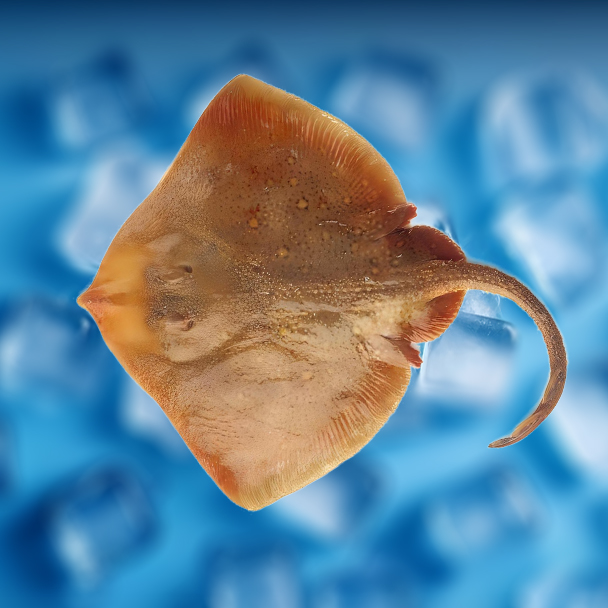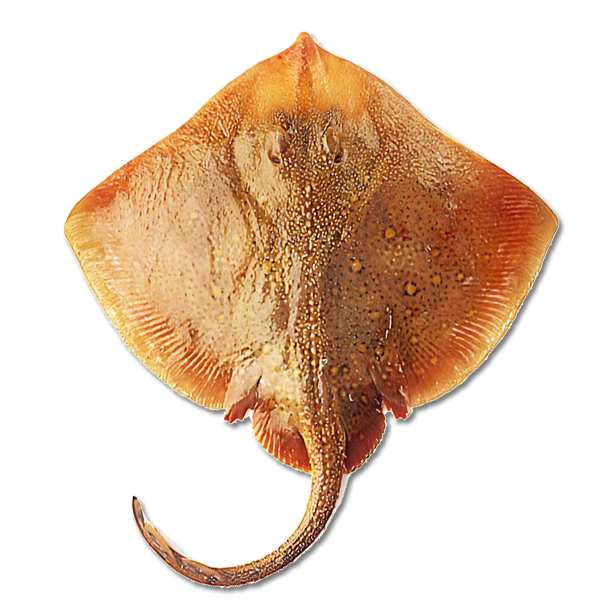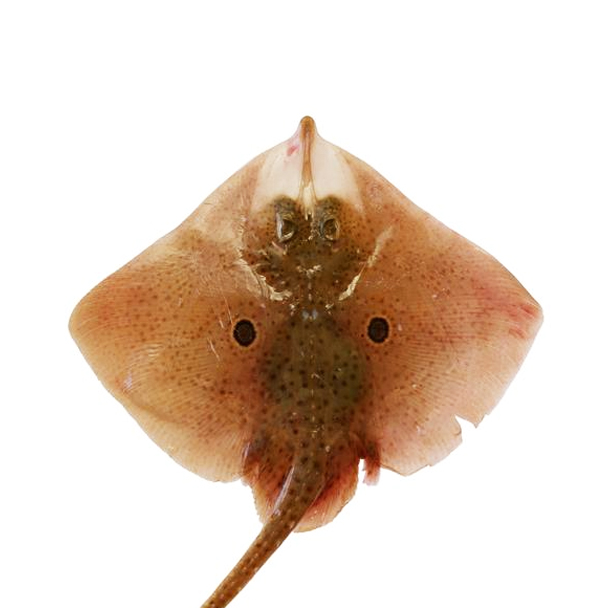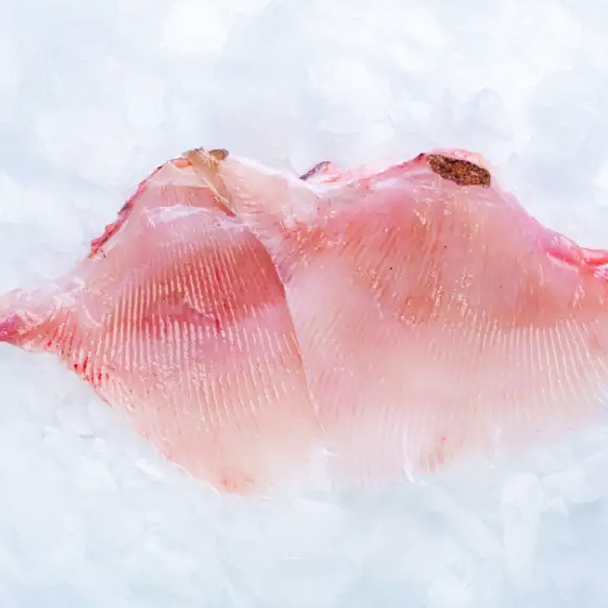








The Japanese stingray (Dasyatis akajei), also known as the red stingray, is a common species of cartilaginous fish found in the northwestern Pacific Ocean, particularly along the coasts of Japan, the East China Sea, and the Yellow Sea. Belonging to the order Myliobatiformes and the family Dasyatidae, it has a diamond-shaped disc with pointed front edges and a long, whip-like tail that is often several times longer than the disc. The tail typically bears one or more venomous spines, making the species potentially dangerous. Its dorsal surface is reddish-brown or brownish, while the ventral side is lighter in color and has a rough texture.
Japanese stingrays inhabit shallow coastal waters with sandy or muddy bottoms. They are active swimmers that glide along the seabed in search of prey. Their diet mainly consists of small benthic invertebrates such as crustaceans, mollusks, and polychaetes, and occasionally small fish. They are ovoviviparous, with a long lifespan and low reproductive rate.
The meat of the Japanese stingray is firm and rich in collagen, particularly around the fins and cartilaginous areas, making it a favored ingredient in Japanese cuisine. It is commonly used in simmered dishes, miso soups, or dried as a preserved food. In some regions, it is also processed into imitation shark fin or other seasoned products. Due to concerns over overfishing and the species’ relatively slow reproductive cycle, Japanese stingrays have been included in certain regional fishery management efforts aimed at promoting sustainable use.
